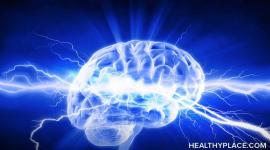What Is SAMe?
 She was making lunch for herself and a friend one Saturday this spring when an unfamiliar feeling swept over her. The 50-year-old social worker had fallen deep into depression two years earlier, and had given up on prescription antidepressants when the first one she tried left her sluggish, sexually dormant and numb to her own emotions. Then, in mid-March, she heard about a naturally occurring substance called SAMe (pronounced "Sammy"). She had been taking it for just a few days when she began setting the table that Saturday morning. A ginger-miso sauce was chilling in the fridge, and she was garnishing her finest plates with fresh anemones. Suddenly, there it was: a sense of undiluted pleasure.
She was making lunch for herself and a friend one Saturday this spring when an unfamiliar feeling swept over her. The 50-year-old social worker had fallen deep into depression two years earlier, and had given up on prescription antidepressants when the first one she tried left her sluggish, sexually dormant and numb to her own emotions. Then, in mid-March, she heard about a naturally occurring substance called SAMe (pronounced "Sammy"). She had been taking it for just a few days when she began setting the table that Saturday morning. A ginger-miso sauce was chilling in the fridge, and she was garnishing her finest plates with fresh anemones. Suddenly, there it was: a sense of undiluted pleasure.
This woman (who asked not to be named) has taken SAMe ever since, and her mood isn't the only thing that has changed. Until this spring she took prescription-strength anti-inflammatories for her arthritis, and still had trouble bending her knees. She's now off those drugs and feeling more nimble than she has in 20 years.
Could an over-the-counter tonic really do all this? Pills purporting to cure everything from hemorrhoids to hangnails are usually worthless and sometimes dangerous. And because SAMe has not been studied extensively in the United States, many doctors are leery. Beware, says Dr. Gilbert Ross of the American Council on Science and Health, a conservative watchdog group. Supplement dealers are once again trying to "flimflam the public into using untested remedies instead of FDA-approved pharmaceuticals."
The Food and Drug Administration has not rigorously evaluated SAMe, let alone approved it. (Federal law permits the unregulated sale of naturally occurring substances as long as marketers avoid therapeutic claims.) And the studies that researchers have conducted are not of the magnitude the FDA would require for a drug approval. But that doesn't mean SAMe is "untested." In dozens of European trials involving thousands of patients, it has performed as well as traditional treatments for arthritis and major depression. Research suggests it can also ease normally intractable liver conditions. SAMe doesn't seem to cause adverse effects, even at high doses. And doctors have prescribed it successfully for two decades in the 14 countries where it has been approved as a drug.
Until recently, few Americans had heard of the stuff. An Italian firm developed it as a pharmaceutical in the early 1970s but lacked the will or the resources to make a run at a drug approval in the United States. Then, this spring, two U.S. vitamin companies, GNC and Pharmavite, started importing large quantities of SAMe to sell as a supplement. The product took off quickly-Pharmavite's Nature Made brand now ranks 25th among the 13,000 supplements sold in grocery and drugstores-and the impact is still growing. When you consider that some 50 million Americans suffer from arthritis or depression, the implications are staggering.
SAMe (known formally as S-adenosylmethionine) is not an herb or a hormone. It's a molecule that all living cells, including our own, produce constantly. To appreciate its importance, you need to understand a process called methylation (chart). It's a simple transaction in which one molecule donates a four-atom appendage-a so-called methyl group-to a neighboring molecule. Both the donor and the recipient change shape in the process, and the transformations can have far-reaching effects. Methylation occurs a billion times a second throughout the body, affecting everything from fetal development to brain function. It regulates the expression of genes. It preserves the fatty membranes that insulate our cells. And it helps regulate the action of various hormones and neurotransmitters, including serotonin, melatonin, dopamine and adrenaline. As biochemist Craig Cooney observes in his new book, "Methyl Magic," "Without methylation there could be no life as we know it."
And without SAMe, there could be no methylation as we know it. Though various molecules can pass methyl groups to their neighbors, SAMe is the most active of all methyl donors. Our bodies make SAMe from methionine, an amino acid found in protein-rich foods, then continually recycle it. Once a SAMe molecule loses its methyl group, it breaks down to form homocysteine. Homocysteine is extremely toxic if it builds up within cells. But with the help of several B vitamins (B6, B12 and folic acid), our bodies convert homocysteine into glutathione, a valuable antioxidant, or "remethylate" it back into methionine.
SAMe and homocysteine are essentially two versions of the same molecule-one benign and one dangerous. When our cells are well stocked with B vitamins, the brisk pace of methylation keeps homocysteine levels low. But when we're low on those vitamins, homocysteine can build up quickly, stalling the production of SAMe and causing countless health problems. High homocysteine is a major risk factor for heart attack and stroke. During pregnancy, it raises the risk of spina bifida and other birth defects. And many studies have implicated it in depression.
How, exactly, might taking extra SAMe improve a person's mood? Researchers have identified several possibilities. Normal brain function involves the passage of chemical messengers between cells. SAMe may enhance the impact of mood-boosting messengers such as serotonin and dopamine - either by regulating their breakdown or by speeding production of the receptor molecules they latch on to. SAMe may also make existing receptors more responsive. These molecules float in the outer membranes of brain cells like swimmers treading water in a pool. If the membranes get thick and glutinous, due to age or other assaults, the receptors lose their ability to move and change in response to chemical signals. By methylating fats called phospholipids, SAMe keeps the membranes fluid and the receptors mobile.
Whatever the mechanism, there is little question that SAMe can help fight depression. Since the 1970s, researchers have published 40 clinical studies involving roughly 1,400 patients. And though the studies are small by FDA standards, the findings are remarkably consistent. In 1994 Dr. Giorgio Bressa, a psychiatrist at the University Cattolica Sacro Cuore in Rome, pooled results from a dozen controlled trials and found that "the efficacy of SAMe in treating depressive syndromes... is superior [to] that of placebo and comparable to that of standard... antidepressants."
This isn't the first natural substance to show promise as a mood booster. Small studies suggest that St. John's wort can ease low-grade melancholy, but SAMe has been tested against far more serious disorders. In one of several small U.S. studies, researchers at the University of California, Irvine, gave 17 severely depressed patients a four-week course of SAMe (1,600 mg daily) or desipramine, a well-established antidepressant. The SAMe recipients enjoyed a slightly higher response rate (62 percent) than the folks on desipramine (50 percent).
No one has found SAMe significantly more effective than a prescription antidepressant, but it's clearly less toxic. The drugs that predate Prozac (tricyclics and MAO inhibitors) can be deadly in overdose, or in combination with other medications. Newer antidepressants, such as Prozac, Zoloft and Paxil, are less dangerous, but their known side effects range from headaches and diarrhea to agitation, sleeplessness and sexual dysfunction. And SAMe? Studies suggest that like other antidepressants, it may trigger manic episodes in people with bipolar disorder. Aside from that, the most serious side effect is a mild stomach upset.
Until large U.S. studies confirm these findings, few American doctors will recommend SAMe to severely depressed people. "The evidence looks promising," says Harvard psychiatrist Maurizio Fava, "but it's not definitive. In some European countries they have different marketing standards than we do." UCLA biochemist Steven Clarke echoes that concern, saying the nation is embarking on a large, uncontrolled experiment in which consumers are the guinea pigs. A key concern is that depressed patients will drop other treatments to try SAMe, and end up suicidal. Columbia University psychiatrist Richard Brown warns of that hazard in "Stop Depression Now," a new book coauthored with Baylor University neuropharmacologist Teodoro Bottiglieri. Yet Brown himself has treated several hundred patients with SAMe in recent years, sometimes combining it with other drugs, and he has never had a bad experience. "It's the best antidepressant I've ever prescribed," he says flatly. "I've seen only benefits."
If the world needs a better antidepressant, it could also use a better arthritis remedy. Nearly a third of the 40 million Americans with chronic joint pain use drugs like aspirin and ibuprofen. In arthritis-strength doses, these so-called NSAIDs, or nonsteroidal anti-inflammatory drugs, can have devastating gastric side effects. Some 103,000 Americans are hospitalized annually for NSAID- induced ulcers, and 16,500 die. Even when NSAIDs don't destroy the digestive tract, they may ultimately worsen people's joint problems, for they slow the production of collagen and proteoglycans, the tissues that make cartilage an effective shock absorber.
Could SAMe provide an alternative? In a dozen clinical trials involving more than 22,000 patients, researchers have found SAMe as effective as pharmaceutical treatments for pain and inflammation. But unlike the NSAIDs, SAMe shows no sign of damaging the digestive tract. And instead of speeding the breakdown of cartilage, SAMe may help restore it. You'll recall that after giving up its methyl group, SAMe becomes homocysteine, which can be broken down to form glutathione (the antioxidant) or remethylated to form methionine (the precursor to SAMe). As luck would have it, the reactions that produce glutathione also yield molecules called sulfate groups, which help generate those joint-sparing proteoglycans.
What does this mean for patients? The Arthritis Foundation, a mainstream advocacy group, recently said its medical experts were satisfied that SAMe "provides pain relief" but not that it "contributes to joint health." The evidence that SAMe can repair cartilage is admittedly preliminary, but it's intriguing. When German researchers gave 21 patients either SAMe or a placebo for three months, using MRI scans to monitor the cartilage in their hands, the SAMe recipients showed measurable improvements. That wouldn't surprise Inge Kracke of Cologne. She was an active 48-year-old when a 1996 auto accident mangled her left knee and left her hobbling on a cane. Dr. Peter Billigmann of the University of Landau prescribed a regimen that combined SAMe (1,200 mg a day for three months) with injections of hyaluronic acid, a cartilage component. Cartilage injuries don't normally heal, but a year later Kracke's knee looked better on X-rays. She now plays golf three times a week.
SAMe may have other benefits as well. Studies suggest it can help normalize liver function in patients with cirrhosis, hepatitis and cholestasis (blockage of the bile ducts). SAMe has also been found to prevent or reverse liver damage caused by certain drugs. As patients hear more about this supplement, they may try treating themselves for all these conditions and others. But many of them will be disappointed-either because they expect miracles that SAMe can't deliver, or because they take the wrong dose or form.
The first challenge is to buy full-strength SAMe. "Some companies are very reliable manufacturers," says Dr. Paul Packman of Washington University in St. Louis. "But some aren't. You can't always tell from the label on the bottle how much active ingredient is actually in it." Pharmaceutical-grade SAMe comes in two forms, one called tosylate and a newer, more stable form called butanedisulfonate. Only Nature Made and GNC sell the new butanedisulfonate version, but several U.S. retailers import reliable tosylate products. And because SAMe is absorbed mainly through the intestine, it's best taken in "enteric coated" tablets that pass through the stomach intact. None of the products comes cheap. The price of a 400-mg dose ranges from $2.50 (Nature Made) up to $18.56 for an uncoated Natrol product called SAM sulfate.
Assuming you buy full-strength SAMe, the second challenge is to use it effectively. Experts advise taking it twice a day on an empty stomach, but different people may require different amounts. Though studies suggest that 400 mg a day is an effective dose for arthritis, the daily doses used in depression trials have ranged as high as 1,600 mg. Clinicians generally start people with mood problems at 400 and ratchet up as necessary.
Unfortunately, there is no convincing evidence that SAMe can make healthy people happier or more mobile than they already are. But there are lessons here for everyone. We now know that methylation is vital to our well-being. It's equally clear that the modern Western diet-rich in protein, light on the plant foods that supply folate-is a prescription for stalling that vital process. "SAMe works as a medication to treat certain diseases," says Paul Frankel, a biostatistician at the City of Hope National Medical Center in Duarte, Calif. "But for most people the problem is undermethylation of homocysteine." In other words, many of us could arm ourselves against low moods, bad joints and weak hearts simply by upping our intake of B vitamins. That may sound less exciting than taking a miracle supplement. But with luck, it could keep you from ever needing one.
next: Why Electric Shock Treatment Still Exists
~ all Shocked! ECT articles
~ depression library articles
~ all articles on depression
APA Reference
Staff, H.
(1999, July 6). What Is SAMe?, HealthyPlace. Retrieved
on 2025, April 18 from https://www.healthyplace.com/depression/articles/what-is-same



